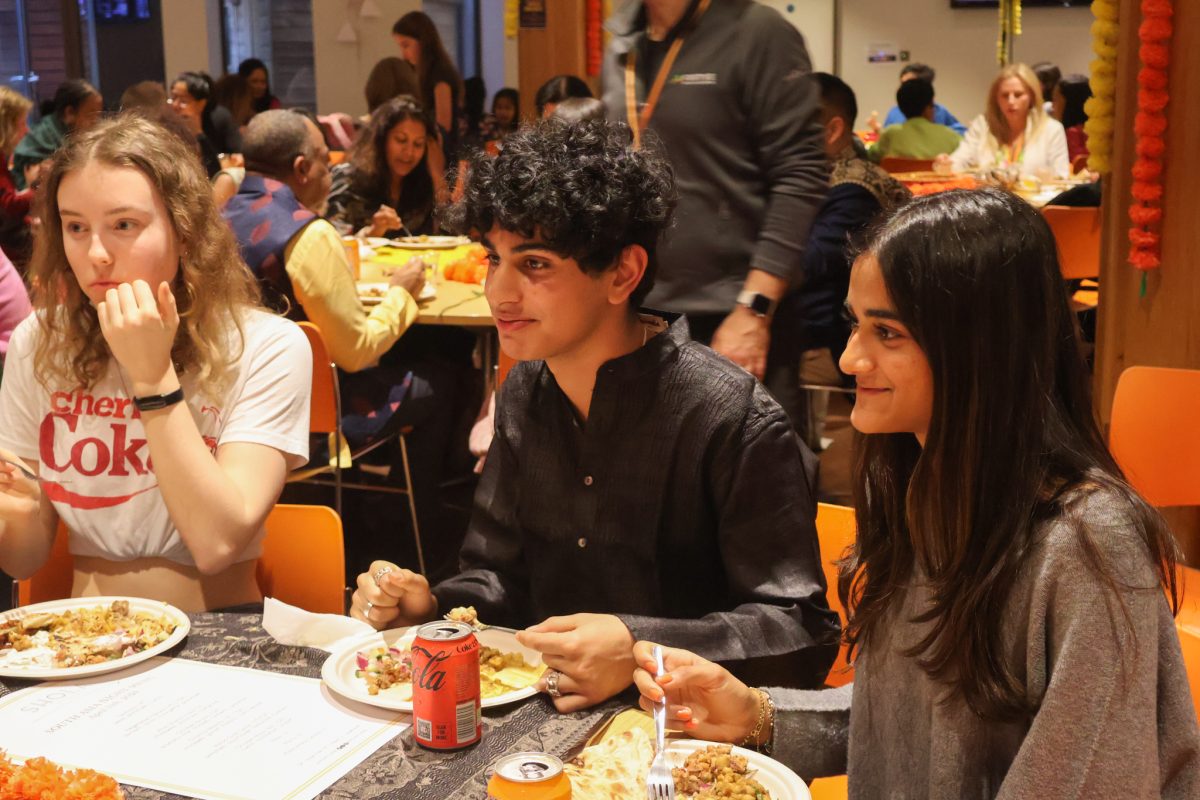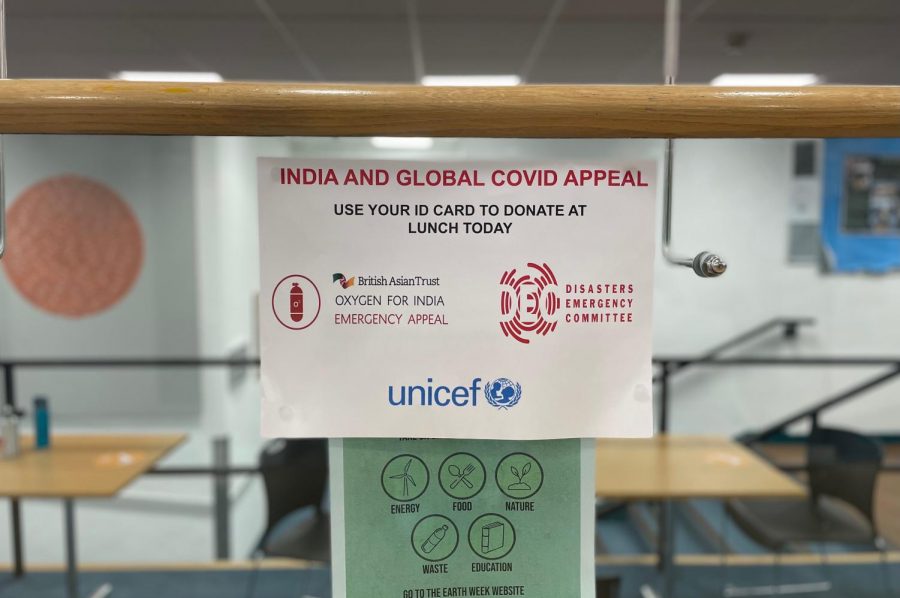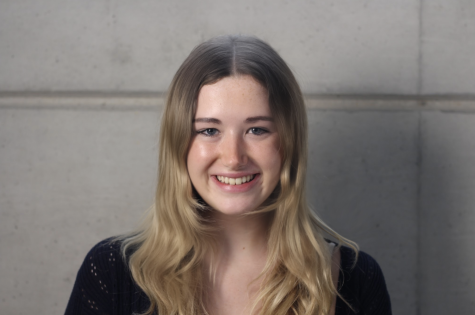As COVID-19 restrictions ease in the U.K., an enormous crisis unravels across the globe. India has recorded 25 million coronavirus cases and 283 thousand fatalities, per the World Health Organization. According to the New York Times, experts estimate that the number of infections and consequential deaths is significantly higher than reported.
Ritesh Kapur (’23), who has family members residing in Mumbai and New Delhi, said the perceptible consequences of the COVID-19 disaster on Indian residents have been devastating.
“My family has been telling me that the streets are completely flooded with people and that it’s just so chaotic right now,” he said. “People don’t have oxygen. Hospitals are filled up. Everyone in my family is having to stay at home.”
A new COVID-19 variant surged through the country in April, pushing Indian healthcare systems to the brink of collapse and engendering thousands of deaths, according to The Guardian. India is now contending its most substantial COVID-19 wave yet, with infection rates reaching the highest daily average reported thus far – around 350,000 new cases daily – per Reuters’ COVID-19 Tracker.
India has been struggling to compensate for the rising infection rates, with hospitals lacking oxygen tanks, hospital beds and other medical equipment, according to The Guardian. Consequently, hospitals at capacity are forced to turn away patients requiring medical care, and many families are unable to hold burials or funeral services for the deceased.
Ruhan Bhasin (’23) said his familial connection with those experiencing the crisis firsthand evokes a “huge jumble of emotions.”
“There’s a lot of anger because the government could be doing better, but there’s also a lot of sadness because so many people are dying, including some of my family members,” he said.
Kapur said the worsening crisis has been particularly challenging because he is watching relatives suffer from afar and is unable to visit grieving family members.
“My grandfather has a serious lung issue and he hasn’t gotten COVID yet, but if he gets it, he will die,” he said. “My uncle also had COVID, and he actually passed away.”
Social Studies Teacher Shrita Gajendragadkar said while nobody in her family has tested positive for the coronavirus, she is “very concerned” about family members with underlying health conditions contracting the virus in its heightened state.
Ayla Dhar (’21) said she echoes the notion that India’s second wave of COVID-19 has been remarkably onerous as she has witnessed its consequences hurting those around her.
“It’s really disappointing and honestly heartbreaking because I know a lot of people that have just been really, really badly hit by it,” she said. “Unfortunately, a lot of my relatives are at a severe risk and quite a few of them were hospitalized over the past couple of weeks.”
According to the WHO, this devastating new surge comes as a consequence of mass gatherings, low vaccination rates and the spread of novel variants found to be 20% more contagious than other strains.
Kapur said he thinks poverty is also a principal contributor to the exponentially rising infections and deemed the government’s response to the crisis ineffective.
“So many people live on the streets, and therefore they’re in really close quarters, so if someone gets COVID, it spreads like wildfire,” he said. “From what I’ve heard, this poverty and the rising cases are also so much worse because the government is not handling it well and is hiding the fact that there are so many deaths.”
People are starting to realize that no matter who you are, you’re at an equal risk because this virus has the potential to hurt anybody. It puts the rest of the world in this position where it’s not just one person’s crisis to solve.
— Ayla Dhar ('22)
Even so, Dhar said the COVID-19 outbreak in India places all residents on a level playing field and forces them to “reconsider priorities” on account of the socioeconomic divide prevalent throughout the country.
“People are starting to realize that no matter who you are, you’re at an equal risk because this virus has the potential to hurt anybody,” she said. “It puts the rest of the world in this position where it’s not just one person’s crisis to solve. You’re not just responsible for your immediate community, but also for your wider one.”
Moreover, Bhasin said this second wave could potentially pose a risk of ethnicity-based hate inflicted upon those of Indian descent.
“There’s a big social impact, especially when it comes to race and the way people are treated,” he said. “In the beginning of the pandemic and even now, Asians were treated badly, and I just wonder if the same thing is going to happen to Indians.”
Gajendragadkar said the surge of the virus in India is a “microcosm of something that could happen anywhere.”
“It’s not specific to India because many communities around the world live in these close quarters and multi-generational households,” she said. “This crisis should reverberate to everybody and resonate with everybody because it’s just a human condition. It’s not an Indian condition.”
International cooperation at work! Appreciate the shipment of vital medical supplies from ?? including 100 ventilators & 95 oxygen concentrators that arrived early this morning. pic.twitter.com/MBZFwSn4cH
— Arindam Bagchi (@MEAIndia) April 27, 2021
Following the COVID-19 outbreak in India, citizens across the globe contributed to fundraisers aiding in relief efforts, per the New York Times. Large corporations also aimed to ameliorate the crisis by providing donations targeted toward supplying oxygen and other essential equipment to India.
Members of the Community Action Committee organized fundraisers to raise money for the “Disaster Emergency Committee,” the “British Asian Trust’s Oxygen for India Appeal” and the “UNICEFs VaccinAID” appeal, all of which intend to provide vaccines, medical supplies and treatment facilities.
In addition to donating to nonprofit groups supporting hospitals in India, Kapur said he volunteers for an organization that involves “connecting with students who are below the poverty line.”
“I’m just trying to help them through this terrible situation by talking to them and asking how their day is and just trying to comfort and support them,” he said. “While there are millions of kids suffering right now, I’m really trying to do as much as I can.”
Kapur said it is imperative that those in the community contribute to relief efforts and spread awareness surrounding the crisis at hand.
“We have to do as much as we can to save as many lives as possible, starting with supplying more oxygen and medical supplies,” he said. “We’re no different from them. They’re humans just like us.”







